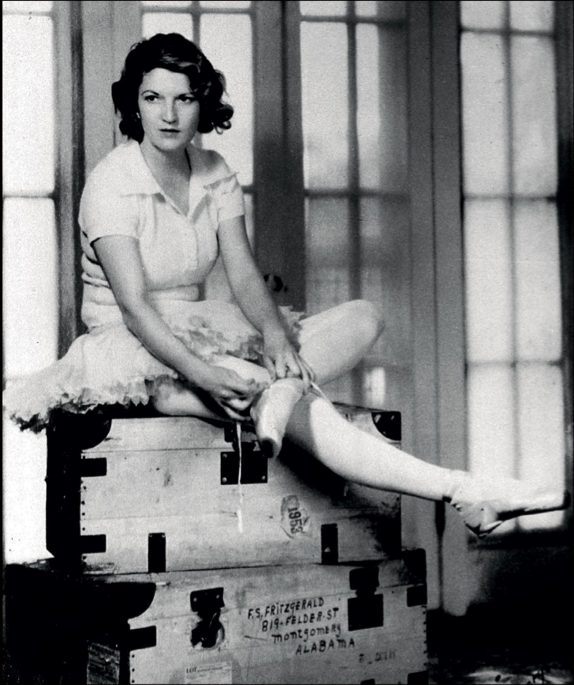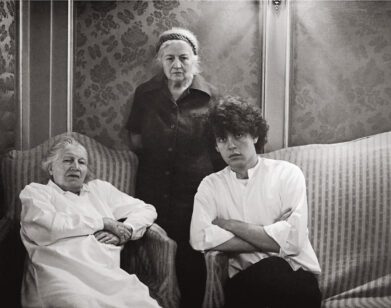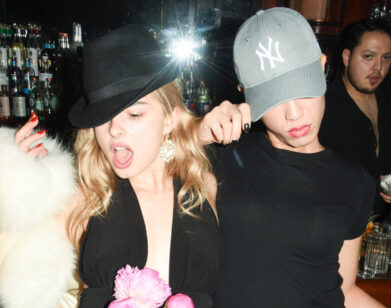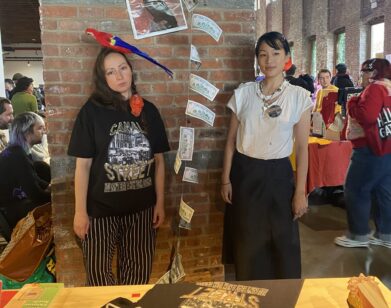Nancy Milford and the Legend of Zelda

ABOVE: ZELDA FITZGERALD
Insanity used to be en vogue. At least up to a point. In Zelda (out today in a new edition from Harper Perennial), author Nancy Milford explores the fine line between living life as performance at the height of the wild 1920s and Zelda Fitzgerald’s later decline into drunken depression and mental illness. Beautiful, sharply smart, and funny, Zelda embodied Scott Fitzgerald’s fantasy of a teenage vamp, seeping into his fiction and becoming the golden-girl wife to offset his literary celebrity.
Yet beyond the buoyantly boozy parties with New York elite, trips to Paris, and the paradise-like Riviera when it was still stretches of unexplored sand, lay an unhappiness that began consuming Zelda. Her struggle with being both the carefree darling who charmed luminaries the world over and a hard-working woman with strong writing and ideas of her own led to collapse upon breakdown, eventually leaving her broken. However, her honeyed hair, blue eyes, and who-the-hell-cares attitude continue to haunt the American conscience. We spoke with Milford about creative drunks, life as performance, how a small town Southern belle ended up grabbing and holding an international spotlight, if we will ever see another Zelda, and how even in her illness, she stayed laughing.
ROYAL YOUNG: What was the scenery that surrounded Zelda’s life?
NANCY MILFORD: Are you talking about shrubs?
YOUNG: [laughs] That’s possibly part of it, the lushness of the South she grew up in.
MILFORD: Yes. She was not a city person. She was not accustomed to high rises, and there were stories about her bathing in the fountain outside the Plaza, or holding hotel elevator doors open with her bathrobe sash, without realizing other people couldn’t use it. She was a real Southern girl who came to New York City when she was 19. She was young and ravishing, not only in her physical beauty, but in her conversation and esprit.
YOUNG: Do you think freewheeling imagination was something she had a lot of? And what about the self-portrait she drew, which you included in the book?
MILFORD: I found that at Princeton, where for years it had been hung in a back closet.
YOUNG: I definitely saw in that portrait a beauty, but also incredible self-distortion and madness.
MILFORD: Yes, and a kind of intensity that’s beyond what the human mind should have to endure. But remember, that portrait was painted many years later, after she had already come to New York where she was just pretty and young and full of life. The mental illness that came later was serious.
YOUNG: Do you think it was exacerbated by this insane, excessive amount of drinking?
MILFORD: Well, I don’t think it could have helped. [laughs]
YOUNG: It seems that whether there was dormant mental illness or not, the constant drinking must have mirrored some chaos inside her and brought that chaos into her and Scott’s outside world.
MILFORD: Nicely put. I mean, imagine you’re from Alabama and living in Paris during a time of tremendous creativity, and it wasn’t just James Joyce, Hemingway, or Pound, but everyone was there at the same time and they stimulated each other in ways she must have found really enchanting and scary.
YOUNG: What was scary about it?
MILFORD: Well, I think the conflict between what regular American women at that time were doing, especially back in Alabama and then Paris where people dressed as men or women, and wore masks and went to extraordinary masquerade balls. And the franc was so low, that you could live off the American dollar there and have a royal time, if you’ll forgive my pun.
YOUNG: [laughs] Forgiven. I loved it, actually. Scott says something so interesting in the book, when he’s writing to a friend about their first European excursion, along the lines of “in 20 years, New York will have the culture of Paris.”
MILFORD: Fitzgerald really read culture pretty damn clearly. It was he who understood that artistic achievement, really imaginative work, goes where the money is. Where people can afford to buy books and paintings. He linked money—not always in a positive way—to being able to encourage culture.
YOUNG: Scott christened the Jazz Age. How did they go on to embody and own that era?
MILFORD: One of the problems with the Jazz Age was its irregular beat. It was not conducive to a writer’s life. If you’re high, whether it’s on drugs or booze, it can make it rather difficult to perform, and Fitzgerald did an amazing job. He wrote something like 130 short stories, and some of them are extraordinary. But in terms of their personal lives, they were free as birds. I remember Gerald Murphy telling me that Fitzgerald did not understand living off of your capital versus living off your interest. The Jazz Age became something they personified rather flawlessly. But they were also a married couple who had a baby very early and traveled with this little person, whether it was to Paris or Rome or St. Paul, Minnesota. They were deeply American in that they were creative but had to have rituals. And of course Zelda went back to Alabama when she was broken beyond recognition.
YOUNG: To what degree was Zelda’s life a performance, much as if cameras were always on her?
MILFORD: Besides the fact that cameras were often on her, she saw herself as performing a role of this exceptional woman. On the one hand she was, and then parts of her weren’t, and when she began to lose control, it must have been devastating. You don’t want to be photographed in that role. Zelda had what she called her “Elizabeth Arden face,” in which she looks very pretty and well groomed. Later, it was like she disappeared.
YOUNG: Do you have any idea of what or who our sort of modern “golden girl” would be?
MILFORD: I thought maybe Madonna, but she’s so much aged out of that role.
YOUNG: She also seems much too concerned with self-preservation.
MILFORD: [laughs] Well, it wouldn’t have hurt Zelda to be a little more concerned with self-preservation. She was playing a role in some way, but it was herself. It was not a distortion until she lost control. Before that, people were just amazed and intrigued and wanted to be close to her and go drinking with her. They didn’t see another side, as Scott did. That was a serious love.
YOUNG: Could you tell me a bit more about her decline?
MILFORD: It’s fascinating how much it parallels our culture. In 1929, she’s showing real signs of breakdown and of course, that’s when America is going into the Depression. It’s weird to put it that way, but it’s there. In 1930, America is really in bad shape and so is she.
YOUNG: How did she react to her decline?
MILFORD: At one point she was sent to Dr. Adolph Meyer in Baltimore, a splendid psychiatrist who spoke with a very heavy German accent and he would ask her “Vell, how are you feeling?” and she would say “Vell, not so hot.” She was a playful woman and she kept that as long as she could.
YOUNG: Zelda was named after a Gypsy queen. To what degree did a sense of lawlessness infuse her life?
MILFORD: She was lawless from the word go. She haunts our idea of what it is like to be this spirited girl caught in a web of destruction, which ends up being romanticized. There she is, just a pretty person, and that’s just not the whole story.
A NEW EDITION OF ZELDA IS OUT TODAY.






